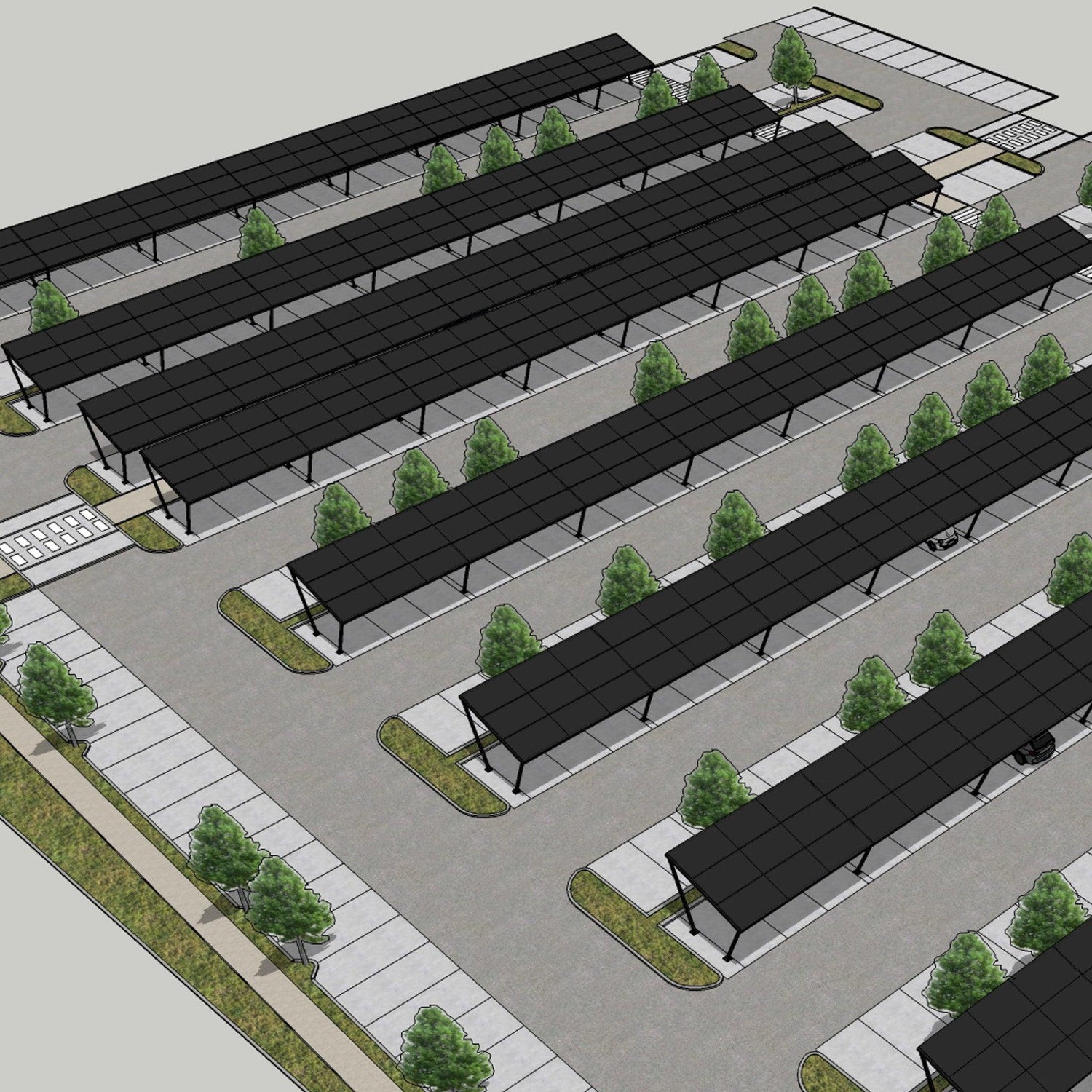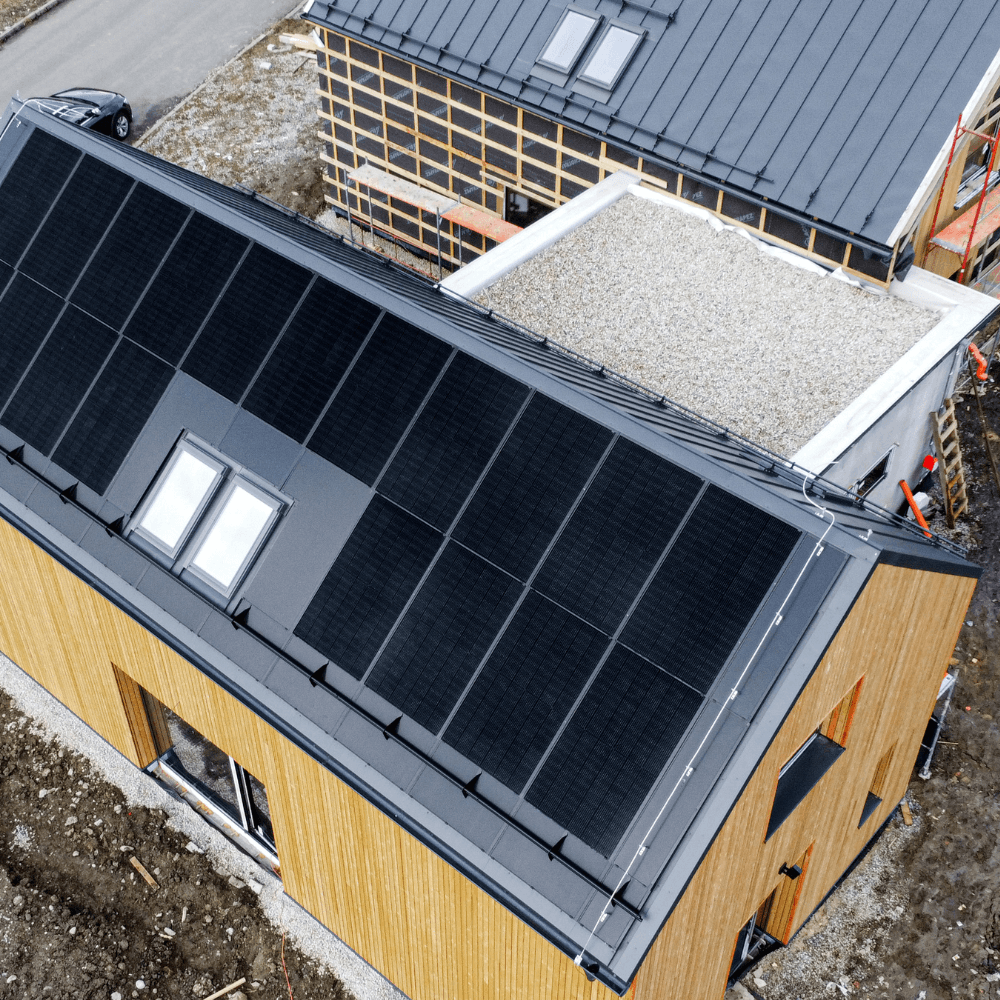To meet the climate goal and thus achieve zero net carbon emissions within the economy, the vast majority of countries have been increasing solar energy production in recent years as part of the country's transition to renewable energy. But this leads to a new problem: finding enough land to house the solar panels.
The easiest and cheapest places to install solar panels are often large, undeveloped lots. That's why we're seeing rural areas – including fragile ecosystems and valuable farmland – turned into solar farms in many places across the country. Many local residents and also conservationists protest against these rural solar projects for different reasons: Some want to preserve natural views, others want to preserve space for agriculture and biodiversity.
Solar energy is likely to play an important role in moving the country away from fossil fuels – but is there a smarter way to do it that doesn't require taking up so much rural and agricultural land?
How about finding a space for solar energy closer to cities or in cities?
Placing solar panels on undeveloped open spaces is often a cheap and quick way to do this. However, this path has several fundamental problems. Large-scale installations often involve bulldozing vast amounts of land, altering plant and animal growth and migration patterns. Increasingly large solar farms are becoming less convenient for people. In the world, this expansion of solar farms in these areas has aroused more and more opposition. This opposition has often been fueled by fossil fuel companies. However, people also have legitimate interests. One possibility to see is more agrovoltaics. It is a way to build solar arrays that allow agricultural use between panels to protect farmland for crops, grazing or native spaces.
Because energy needs are most out of rural areas, and any kind of rural solar power still means building long-distance transmission lines, which can be expensive and cumbersome. One thing that can help solve some of these problems is large, open, unused space closer to cities. Parking lots
In the article, we will learn how placing solar carports over parking lots could be a valuable investment for many cities. And since more countries, such as France, are switching to modernizing parking spaces with solar energy, they can be a good example for us as well.
Parking lots cover a lot of built-up land. These spaces could play one role in solving the solar land problems if we covered the parking lots with solar panels.
It's useless space except for parking underneath. And that is mostly not even used. It's an idea that other parts of the world, such as France, are also embracing. The 2023 policy in France will require outdoor car parks with more than 80 spaces to cover at least half of the area with solar canopies. Importantly, a policy like this takes advantage of an already cleared, low-biodiversity space that is also close to consumers. And car park shelters also provide shade for cars in hot weather and cover them from snow.
The Ministry of the Environment of the Slovak Republic in the Strategy of the Environmental Policy of the Slovak Republic until 2030 stated the effort to develop renewable energy sources that are friendly to nature. With the fact that the Solar Sources will be placed mainly on the roofs of buildings, parking lots and brownfields, soils of lower quality, during the implementation of mitigating measures and not on soils of high creditworthiness and on biotopes of national and European importance.
The biggest obstacle to putting solar power in parking lots is cost. The cost of putting up a solar shed will be more than 50 percent higher than a conventional solar farms. The thing that makes solar carports more expensive is that they are higher off the ground than conventional solar farms. They need more construction material and more weight at the bottom to keep them from blowing away. Why would the company want to invest even more money? These questions are answered by a study focused on the economic potential of car park shelters, and as a case study, he used Walmart supercenters (2017), where Professor Pearce, as a co-author, achieved exceptional findings. The study found that in places with high solar flux or more solar radiation in the area, solar shelters can be incredibly profitable. (Arizona). But they also found that even in areas of the US considered to have less solar flux (Michigan), selling solar power back to the grid at current rates can still be profitable enough to make solar shelters worthwhile in the long run. .
In another 2021 study, Pearce and his team found that the total capacity of all American Wal-Mart Supercenters would be 11.1 million gigawatts of solar energy. That's roughly a high estimate of what the French parking program expects. With this power, Wal-Mart could power about 100 charging stations for electric vehicles. If they combine the shelters with a rooftop solar panel, they will be more than enough to power the shops. There would also be an opportunity to sell power back to the main grid power companies, or the stores could be the anchor for a local micro-grid in the community to provide power to homes in the event of power outages. This is not a one-size-fits-all solution, but in good locations where companies can afford the initial installation costs, research shows that solar shelters could be a useful solution.
As part of the warranty, they are generally guaranteed to work for 25 years or more with an overview of several decades after that. That's an investment. You invest in capital assets where there is a return during its lifetime. It should be approached in the same way as any other investment. Except this one is also good for the planet.
In some parts of America, airports and universities are already testing solar parking lots.
Walmart and target are just starting to try them out in certain stores, and politics is also slowly catching up to facilitate these solar projects. Waltmart adds 6.5 MW of rooftop and canopy solar to California stores. Such as Maryland offering grants for solar shelters and a New York city zoning proposal that would allow solar on more than 8,500 acres of parking lots. Parking lots alone cannot solve the problem of the lack of solar land. The amount of solar generation we need is likely to require a combination of efforts, including in rural areas, field arrays, shelters where we can put them, rooftop arrays, and other locations such as along highways, landfills, or brownfield sites. But solar shelters are part of a large toolbox that could significantly reduce our dependence on fossil fuels and show a future where cities find ways to breathe new life into the most overlooked spaces.
see the product Solar shelters https://hybridhouse.sk/products/solarny-pristresok-pre-auto
Source: VOX and DETLA air
MZPSR Environmental Policy Strategy of the Slovak Republic until 2030





Leave a comment
This site is protected by hCaptcha and the hCaptcha Privacy Policy and Terms of Service apply.